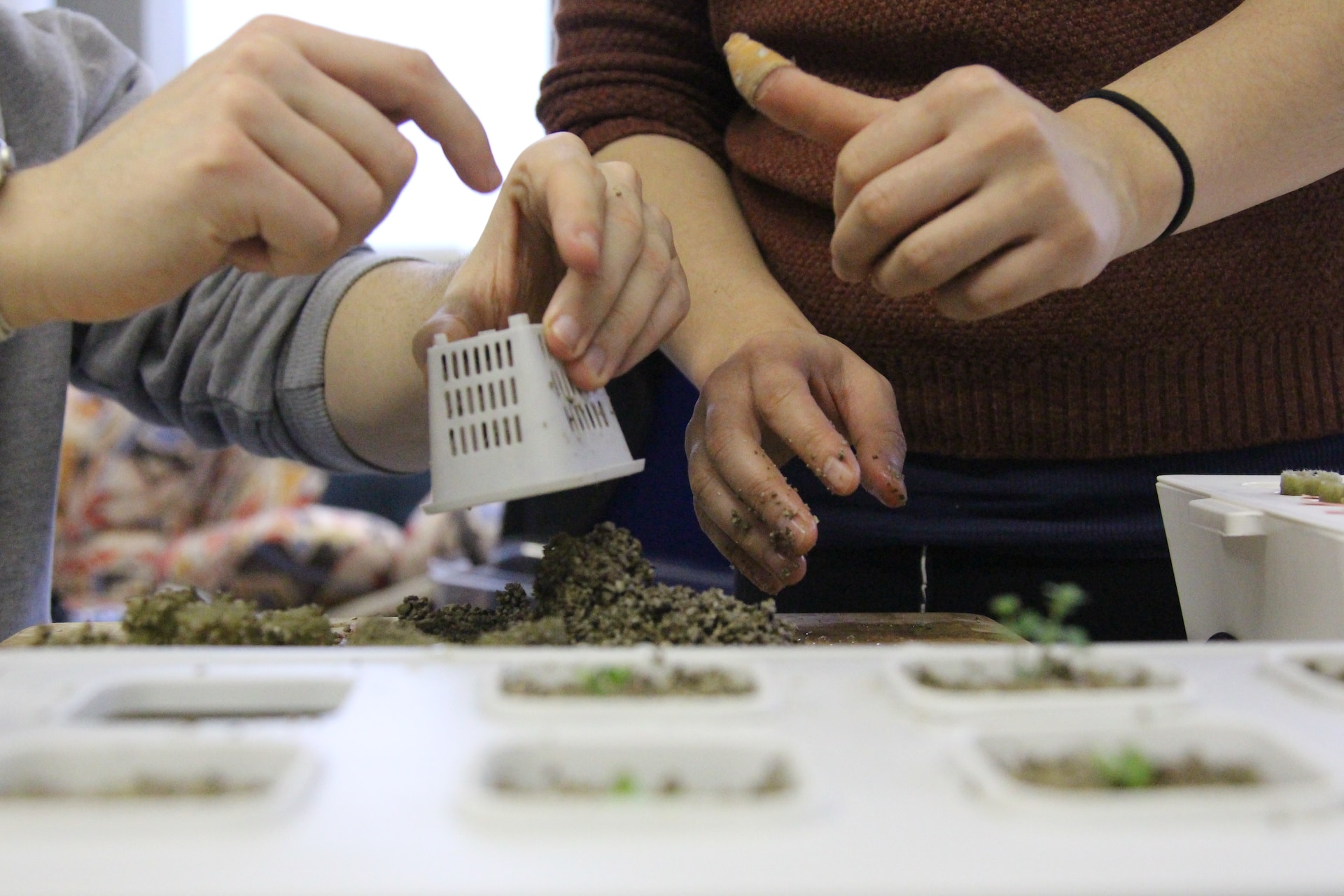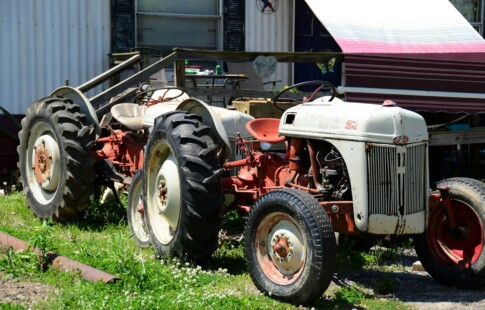
How to Start a Hydroponic Garden: 5 Easy Steps
We are reader-supported. When you buy through links on our site, we may earn affiliate commission.
When the pandemic started, many people decided they would try their hand at growing their food amid shortages and increasing prices. That green thumb persists nearly four years later and leads those who want to expand their setup wondering how to start a hydroponic garden.
How easy is it to set up one of these systems, and why is it beneficial to learn how? What advantages does it have over soil growing? Answer these questions and explore the steps below.
1. Pick Out What You Want to Grow
Of course, the first thing to do is decide what will go in the hydroponic garden. A plethora of vegetables, berries, and herbs work excellently in this type of grow system. Such a list includes but is not limited to:
- Spinach
- Celery
- Rosemary
- Strawberries
- Genoese, holy, and Thai basil
- Cucumbers
- Lettuce
- Peas
- Peppers
- Chamomile
- Dill
Leafy greens and vegetables like celery tend to do phenomenally in hydroponics because they’re made up of 90%–95% water. Growing anything in these gardens is technically possible, but one of the perks of hydroponics is its space-saving capability. Plants with stalks, large root systems, and vines — like corn, potatoes, and melons — work best where they can spread out.
Remember to start the seeds outside the system and transplant them in later when they’ve developed a bit. Check the packet to see what the provider recommends.
2. Choose the Right Hydroponic System
Like there are many options for what to grow hydroponically, there are also several systems to choose from. The best one depends on the space available and the cost of creating it. When researching how to start a hydroponic garden, the choices include:
- Raft: The sprouts float on a platform as their roots hang in the water, where an aquarium pump adds oxygen to the system.
- Top feeder: Water moves to the top of the system — where plants hover over a pool in a growing medium — so the roots can absorb it, and the excess can drip back into the reservoir.
- Aeroponics: The plants’ roots dangle in an enclosed area where water enters in mist or liquid form every half hour or so.
- Wick: A wick draws water from a reservoir into a substrate where the sprout grows.
- Ebb and flow: Roots develop in a medium, and water enters and drains out of the growth area frequently.
- Air-gap: No substrate necessary — sprout roots hang down from a platform, allowing a gap of air before they hit the water.
- Nutrient film technique: The plants sit on a slightly tilted floating surface, with the tops of the roots exposed to air and the bottom parts sitting in water, which exchanges through a pump and drains back into a reservoir.
Decide on the size of the system by reading how big the plant will be on the seed packet and how many sprouts will develop in it. Multiple species require a broader setup, while plants that need more room to grow will require enough surface area to mature. It’s also valuable to think ahead — will the hydroponic garden stack one day?
3. Prepare Your Grow Area
There are a few things necessary to set up a hydroponic grow area — the first of which is the container. What will the plants grow in? Beautified options are available, but thrifty DIYers can make do with a storage container or large bucket, then begin building their system of choice.
Next, it’s vital to figure out where the system will grow. The most straightforward method is to set it outside during summer, but those who want to garden year-round or don’t have good lighting will want to use artificial lights. Incandescent, light-emitting diode, high-pressure sodium, and fluorescent are standard choices.
According to the National Park Service (NPS), gardeners will need nutritious water to feed their plants, which contains calcium, phosphorus, and nitrogen. Ensure the plant has access to all three — adding them to the water may be necessary, but the roots will obtain oxygen through the space the hydroponics system provides or a pump.
Then, the sprouts need something to grow in. Net pots have small gaps in the sides that allow water in, and the growing medium provides air and additional nutrients.
The last important considerations are water pH and fertilizer. Because hydroponics majorly features water, ensuring it suits the developing plants is crucial. They do best in a pH of 5.4–7 — testing strips come in large, cheap packs, or you could buy an electronic tester. It will take some research, trial, error, and advice from others to get the best fertilizer blend, but remember to test the water’s pH after adding it, as some can change the acid and base levels. Keep testing every few weeks.
4. Start the System Up
It’s finally time to get the hydroponic garden up and running. Add the water so you can check for leaks and proper pH levels. Once everything checks out, place the sprouts in the system, bring over the grow lights, and set their timer.
5. Sit Back, Maintain and Watch
The hydroponic system has started! Now what? While it works on its own for the most part, it’ll need a bit of maintenance to nurture the plants.
The sprouts will take in water as they need, so the liquid might need replenishing — routinely check the bin for enough water and test the pH levels. Letting it sit for too long can also result in bacterial or algal growth, so switching all the water out after a while can ensure healthy crops. Fast-growing food like lettuce or kale will be ready in three weeks to 60 days.
Why You Should Learn How to Start a Hydroponic Garden
Farming is an incredibly resource-intensive industry. The world must expand food production by 70% by 2050 to meet growing demand, requiring the use of 593 million hectares of land. Seventy percent of water is used for farming, mostly because of unsustainable irrigation. Due to all the major shifts in landscape and resources, the Earth has already lost 52% of its biodiversity. Not to mention, standard practices heavily pollute, and the amount of trees felled for agriculture is more than can keep up with the dirty air.
If people started growing more of their own food, the food production sector wouldn’t have to work as hard. The compact growth enabled by hydroponics is a significant advantage that can combat many of the previously mentioned issues. One hydroponic garden might not make a big difference, but many — along with major changes in the agricultural sector — can make farming much greener.
The Benefits of Hydroponics
According to the NPS, the advantages of learning how to start a hydroponic garden include:
- Food hardly has to travel to get into consumers’ hands, decreasing transportation costs and emissions.
- Hydroponics enables growth throughout the year with proper maintenance.
- The lessened space it requires can help resolve many of the problems with modern industrial agriculture.
- Hydroponics uses up to 10 times less water than current farming methods.
- Farmers can control factors help make plants grow faster, making hydroponic gardens often more fruitful.
Knowing How to Start a Hydroponic Garden Empowers You
Whether starting a homestead or simply wanting to grow food themselves, people learning how to create a hydroponic garden are learning the way of the future. They’re anticipating food shortages, paying more attention to the planet and nourishing themselves with locally grown crops. Try setting up a hydroponic system to experience the many boons it provides.
Share on
Like what you read? Join other Environment.co readers!
Get the latest updates on our planet by subscribing to the Environment.co newsletter!
About the author
Steve Russell
Steve is the Managing Editor of Environment.co and regularly contributes articles related to wildlife, biodiversity, and recycling. His passions include wildlife photography and bird watching.





